Sorted by date Results 26 - 50 of 61
With the unseasonably warm weather, many of you likely took advantage to get in some flying. With cold weather on the forecast, we now have to prep for flying in cold. That might include making sure we have adequate cold weather gear in the aircraft in the event of mechanical problems. That can include an off airport landing or an issue on the ground during taxi. Murphys law states it will happen on the furthest taxiway from the nice warm FBO. Do you have enough warm clothing to safely walk to where you can get assistance? In addition to...
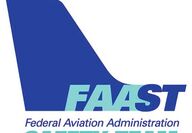
Whether you fly in a towered environment or non-towered, the two are very different and require you to be aware of other traffic. While the towered environment is much more controlled, you still have to observe and avoid. Non-towered does not have someone setting things up for you or giving you advisories of who, what, and where there are other planes. Non-towered have lots of complaints from pilots about people landing in the opposite direction during calmer winds or even with light tail...

The summer is fading fast and the weather change is inevitable; no more high clouds and light rain, its low clouds, fog, and yes snow for the general aviation flying. If you have an instrument rating are you prepared? Remember all the acronyms that are used? Things can get intimidating fast if you have not flown in the weather in a while, and without using the auto pilot. With new technology we have auto pilot approaches that are becoming common in GA aircraft, but what happens if the auto pilot...
When do you cancel IFR? How do you make that determination? Lets examine a little about what your IFR clearance actually does for you. It means you have a cylinder of protected airspace around you where no other IFR traffic should be. What about VFR traffic? They are still allowed in your “personal bubble.” IFR and VFR traffic are altitude separated by 500 feet vertically. At least, as long as the VFR pilot is actually following the rules (and its shocking how often they don’t!) and assuming they are on a good altimeter so their altitude is ac...
Taking Advantage of Webinars It is likely that your flying has been impacted somehow by the unusual reality that we find ourselves in. Perhaps you haven’t been able to fly much and find your currency slipping. The gatherings at the airport, complete with all the usual hangar flying, haven’t been occurring. The aviation industry has been severely impacted. This is a good time to ensure you take your safety standards into consideration. While in person safety seminars are likely not occurring, there are a myriad of online options available. If...

You have just had your old airplane updated with some new electronics. The availability is endless for general aviation airplanes, as is the cost. You want to update and expect it will make your life easy when you are flying VFR or IFR right? How much training are you going to get before you jump in and take off? If you are going IFR, you could get into trouble if you are not comfortable with the new equipment and how to set it up. As a CFII, I see people get the latest updates and normally a fe...
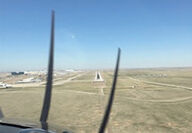
Recent changes in travel brought about by COVID-19 had put a damper on my planned aviation adventures. A trip to Hawaii in my attempt to land a Cessna in all 50 states canceled. A friend and I were going to fly to Wyoming with a stop in Idaho so I could complete my 50th state was also canceled. An opportunity to fly a rescued dog to Greeley, Colorado in my C182 became a fun chance to aviate under COVID restrictions. As I contemplated the trip, I had a crazy idea. Why not land at KDEN? (Denver...
Groucho Marx once said; “Age is not a particularly interesting subject. Anyone can get old. All you have to do is live long enough”. It shouldn’t come as a surprise to anyone that we are not going to live forever. However, while we’re here, we want to enjoy the trip and “squeeze the last bit of juice out of the orange.” Age sneaks up on us while we’re busy living life, but taps us on the shoulder when we attempt to taxi over chocks, forget frequencies, or miss radio calls. Growing older doesn’t have to result in becoming an unsafe pilot. W...
We like to think at a non-towered airport, choosing the best runway for takeoff/landing is a simple matter of picking the runway best aligned with the wind. However, for many pilots a multitude of additional factors influence their decision. Runway length is perhaps the most obvious reason for choosing a runway not favored by the wind. High performance aircraft often need more runway to meet their takeoff performance requirements and are more likely to accept a crosswind than be limited by runway length. Traffic flow at uncontrolled airports...
In addition to regular helicopter traffic including medical transport, law enforcement, military, and pipeline patrol, there are seasonal periods where you’ll find an increase in helicopter operations, such as wildfire, pesticide application and construction. Some pilots are more comfortable operating around helicopters than others. A towered airport will assist in aircraft spacing, wake turbulence avoidance and general traffic flow between fixed wing and rotary wing aircraft. As many Minnesota airports are non-towered, what can we expect f...

Landing a plane can be an issue if you don’t consider all the variables and understand the airplane characteristics that you are flying. Landing is by far the hardest part to learn when training and the part that causes the most accidents. Most CFIs fly different planes on a regular basis but most pilots fly only their airplane. Do they stay proficient in their plane? As habits are developed (good or bad) they continue to deteriorate if not kept up with proficiency training. By the time a p...

Hopefully you've learned that setting personal minimums in aviation is a must. In other words, at what maximum crosswind have you demonstrated proficiency in landing? Or what is the lowest ceiling you will plan to attempt an approach to land in instrument flight? What ceilings will you accept for both day and night flight? Fuel, passengers, and the list goes on. Having thought about these limitations is the first step in setting good boundaries in an attempt to maintain safe airmanship. Writing...

How do you approach safety while flying? As a flight instructor we get to see and hear lots of issues that come up at the airport and try to be a sounding board for the issues that pilots bring up, but really what is safety? Is it being right or doing the right thing? You can be right and end up with a damaged airplane or worse. The days of going out and starting your plane and dusting off the cobwebs are gone (well for most people). With the high demand for pilots it can get very busy at most a...
While speaking to respected Instructor, DPE, and FAAST Team member Barb Mack recently about the aviation community and the dissemination of information between instructors, students, and examiners she said that “the people we’re reaching through Wings (FAA Pilot Proficiency Wings Program) aren’t the people we need to be reaching.” That wasn’t to say we don’t want to reach those people. It was a statement of fact that the folks utilizing the program were and are the exceptional aviators. They are getting the message. They are the folks who a...
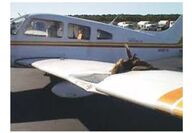
As we enter the fall season, the time for migratory bird activity is upon us. Very few pilots have had any training on bird activity, bird strikes, or reporting of bird strikes. While not a frequently occurring hazard, there are an average of 26 bird strikes per day that are reported across the United States. Imagine how many strikes that go unreported. Now, lets run through a few facts on bird strikes. • There are up to 20 billion birds! • Worldwide, bird strikes are responsible for cau...

I hope you never get hit with a laser but it is a situation that should be discussed before you get surprised. Unfortunately, shining aircraft with lasers is an increasingly popular past time for people often uneducated in its potential danger. There are thousands of reports of this activity yearly, with the number of events occurring increasing each year. Shining a laser on an aircraft is a federal offense that carries a large fine and jail time. In California a man was sentenced to two years i...
Looking for some aviation education, a Wings credit, or maybe just a donut with coffee and some hangar flying? Look no further than the KFCM Saturday Morning Seminar Series! Seminars are held every Saturday morning from 0900-1000 and are free of charge. The only exceptions are holiday weekends, Oshkosh, Flying Cloud Air Expo and the Flying Cloud Air Tour. They are held at Modern Avionics/Air Trek North, 10000 Flying Cloud Drive, on the east side of the field. Flying in is encouraged – our Tower controllers are friendly and know that transients...
The FAA defines Aeronautical Decision Making (ADM) as, “…a systematic approach to the mental process used by pilots to consistently determine the best course of action in response to a given set of circumstances….” When the FAA talks about ADM, it really likes pilots to work through the DECIDE mnemonic but today let’s skip the post-mortem flagellation of that particular equine, OK? I did a brief study many years ago of accidents involving aircraft with ballistic parachutes, which have saved many lives in the years since then. When parachute...
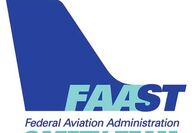
It's easy to go through life and lose track of time. Perhaps you've become aware it's been three months or longer since your last flight. When was the last time you submitted to a flight review? How about that goal of a new phase of Wings? Are you still current or more importantly proficient? There are many ways of immersing yourself in aviation even when you don't have time or money to go flying. Some ways of keeping pilotage in the front of your mind are as easy as listening to podcasts like...
Listening to a favorite Podcast recently has brought Carbon Monoxide to the front of my concerns so much so that a portable industrial CO detector was purchased and put into use. Please check out Aviation News Talk episode 90 which discussed the Mooney accident where the pilot passed out from CO poisoning only to wake up after the plane had landed itself in a field. The pilot is interviewed and gives great insight into his experience. Next listen to episode 102 where two General Aviation pilots report their personal experiences with the CO dete...
The Insidious Creep of Hazardous Attitudes. We all tested on the FAA’s top 5 Hazardous Attitudes and learned their antidotes. For review, let’s examine them again just to refresh: Anti-Authority – A purposeful disregard for rules, regulations, or common courtesy Antidote: Follow the rules; they are usually right Impulsivity – Something, anything, must be done right now right or wrong Antidote: Not so fast, think first Macho – Taking undue risk and being a “show off” Antidote: Taking chances is foolish Invulnerability – Accidents only happen to...
One of my life goals is to land a single engine GA plane in all fifty states. In May, work took me east where I wanted to land in PA, DE, NJ, MD, VA, WV and fly the SFRA. I knew that there were quite a few rules regarding flight in and around DC, so I set out to learn the requirements. Flying the complicated airspace along the eastern seaboard can be challenging, especially when in and around the Washington, DC Special Flight Rules Area. The FRZ was created shortly after the 9/11 attacks, and the ADIZ was created in 2003. Since their creation,...
Just over a year ago I completed In Operations Experience (IOE) at a Part 135 Certificate Airline and was in my first week of single pilot operations when the weather turned icy and cold. The radios were chaotic that dark morning and in all the confusion I exceeded a clearance in taxi and got the dreaded call to copy a phone number. A tough pill to swallow for an FAA Safety Team Representative, Commercial Pilot, Certificated Flight Instructor Single and Multi-Engine and Instrument. I, of all pilots, should have known better, having harped on...

As we set our clocks back an hour each November, our thoughts shift toward coping with Old Man Winter's impending visit, and the best ways to cope without hibernating for five months. For those that choose to remain current and proficient, the following tips will help endure the season: Be Prepared When planning your flight, be sure all elements are covered such as: Weather - The night before the flight, obtain a standard weather briefing. Knowing what to expect in the form of frost or snow the...
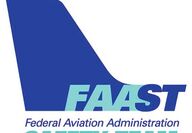
Flying Technologically Advanced Aircraft is a lot of fun. A few years ago, I was giving an IPC check to a commercial pilot in a Cessna 182 with a G1000, a nice aircraft to fly with unlimited amounts of information available, as well as integrated auto pilot for those long solo flights. As we prepared for the flight, we went over planned activities and my expectations for a good flight. Shortly after takeoff, the pilot engaged the auto pilot and programmed the approach in. I let him take off and...